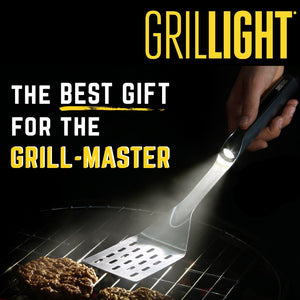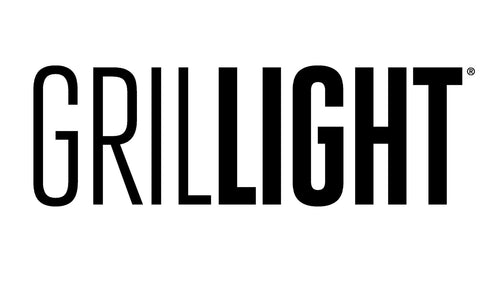Last updated 9/22/23
The grillmaster lifestyle is on the rise, there's no doubt about that. You get together with family and friends, enjoy the outdoors, entertain, and (best of all) you get to savor that sweet, smoky, hot-off-the-grill flavor. Unfortunately, you can't just wake up and be a grillmaster.
With the help of our friend, Stephanie, over at campingcooks.com, we're going to break down some of the most common grilling mistakes. Pay attention, and you'll make the leap from amateur to master in no time!
Mistake #1 - Using the wrong type of grill
Propane grills - Propane grills are the most convenient grill. They're easy to turn on/off, they have dummy-proof heat controls, and they heat up very quickly. However, keeping extra propane on hand (you never know when the tank will run out) is seen as inconvenient for many people.
Electric grills - Electric grills are about as easy to use as propane, and they're definitely the safest option. However, there is no open flame, so some say it's no different than using a stove top. Also, they're very easy to clean, but the functionality is similar to frying, so spatters and splats are common.
Charcoal grills - Charcoal grills are the most popular grill due to the added flavors charcoal creates, and there are so many different ways to use a charcoal grill, the possibilities are endless. Unfortunately, despite their popularity, many find them confusing to use and annoying to clean.
Wood grills - Wood grills are a favorite among campers and outdoorsmen. They create a flavor profile unlike any other grill (imagine a roasted marshmallow over a campfire). However, they are the most time-consuming, the most difficult to keep lit, and often the most dangerous.
Mistake #2 - Not prepping the grill correctly
At least once at the beginning of each grilling season, a grill needs prepped.
The first step in prepping a grill is cleaning it. For charcoal or wood grills, clean out the old ashes and wipe down the barrel or bowl. For propane or electric grills, simply remove any grates and wipe down burners with a heat-safe cleaning product (vinegar actually works wonders!)
(Note: it helps to scrub down the warm grates with a proper tool a few minutes after cooking each time. This way, there's not as much to clean off at the beginning of the next season.)
The second step in prepping a grill is testing it. First, use water and pour into the grill to make sure there are no unexpected leaks that could cause a fire hazard. Then, after letting it dry out, turn it on and check all the controls to make sure its working properly.
(Note: it sounds tedious, but its better to do this beforehand, rather than inviting your in-laws over to watch your grill burst into flames, along with the burgers they were so anxiously anticipating.
Mistake #3 - Not assessing the grill temperature
There are a few ways to do this, depending on your grill. Obviously, if your grill has a temperature gauge in the hood, this is barely a step. However, if it does not, you have 2 choices.
The smartest and most effective choice is to buy a thermometer that can placed on the grate to monitor the temperature.
The other option is the "hand test." I wouldn't recommend this, but if you must, at least know how to do it. If you can hold your hand 6" above the grate for 8-10 seconds, the temperature is low (250-350F). If you can hold your hand 6" above the grate for 5-7 seconds, the temperature is medium (350-450F). If you can only hold it for 2-4 seconds, it is high (450-550F).
Mistake #4 - Using the same grilling process for all foods
The processes for grilling meats vs. grilling veggies is very different. Unfortunately, it's not all just "turn on the grill, put the food on it, and wait."
Grilling Meats
1. Tenderize
Unless you buy the most expensive cut of meat, it's not going to be the perfect tenderness, but there are ways you can help this out. First, you can marinade the meat with an acidic or salty liquid or sauce. Another option is gently pounding the meat with a tenderizing hammer, or gently poking both sides of the meat repeatedly with a fork or knife. The least favored, but most effective option is the "low and slow" method (low temp, long cook time) generally adopted by BBQ fanatics and brisket smokers.
2. Season
This is a majorly important part of the process, but its easy to go overboard. When seasoning meat, the most important thing is to let it get to room temperature, pat it dry with a paper towel, rub it lightly with vegetable oil, and lightly coat it with the seasoning of your choice. This should all happen immediately before it goes on the grill.
3. Flip ONCE
Almost everyone who has used a grill has experienced the devastation of meat sticking to the grill grates. To prevent this, make sure you rub your meat down with oil (before seasoning, as mentioned in the previous step), but DO NOT rub down the grill grates with oil. Also, wait until the meat has had time to fully develop the "grill marks" we all know and love. Not only does this look amazing, the grill marks are proof that the meat has "released" from the grates and is ready to turn.
Grilling Veggies
1. Know the cook times
Each vegetable has a unique cook time, and this can vary within similar veggies based solely on how small the slices or chunks are that you're grilling. For example, asparagus spears can be done in about 8 minutes, but potatoes, even cut into small pieces, will take much longer.
2. Utilize tools
Many companies make tools to help with grilling veggies. From skewers, to grill mats, to griddles, to baskets, don't be afraid to invest in these tools. They make grilling veggies a thousand times easier. (Check these out: https://grillight.com/products/premium-grillmat-2pk)
3. Foil packets
These are a favorite among grillers, because they allow the veggies to steam and grill at the same time. Essentially, you take a large sheet of aluminum foil, place veggies in them along with oil and seasoning, and close up the foil, creating a packet. Then, place it on the grill and wait, flipping the entire packet a few times throughout.
Mistake #5 - Leaving food on the grill until its done
This may sound a little weird if you've never been introduced to the concept before, but bear with me. There's this thing called "carryover cooking." Basically, what this means is that after food is taken off the grill, it will cook slowly for 3-5 minutes before it reaches its final doneness (is that a word??). This is important with steak or burgers, as many people prefer them at different levels of doneness (it is now...). That being said, always take red meat off the grill about 2 minutes before you think it is done, to allow for carryover cooking.
Mistake #6 - Eating food immediately off the grill
It's important to note that carryover cooking won't work if you eat the food immediately after you take it off the grill. That is to say-- you have to give the cooking time to carryover. Give your food about 3-5 minutes after removing it from the grill before serving it.
Mistake #7 - Not cleaning the grill, or using the wrong cleaning method
First and foremost, CLEAN YOUR GRILL AFTER EVERY USE. Here are some tools to help you do that:
Grill Scraper - A grill scraper effectively scrapes residue off the grate and hood of the grill. Some are flat and some have ridges to align to most grill grates, but you really can't go wrong with any of them.
Wire Brushes - Wire brushes have been around for a long time. They're popular because the wire bristles can reach between grates and in corners. However, many brushes leave almost invisible wires behind, which can be extremely dangerous, so make sure you invest in something well-made, and always check for loose bristles.
Scrub Brushes - Even if it's not specifically made for a grill, you should always have some sort of scrub brush, hand-held scrubber, or rough towel to wipe down grill surfaces.
As far as yearly cleaning goes, there are 2 methods you can use, and the correct one depends on which type of grill you have.
1. The Soak Method
If you have a charcoal or wood grill, fill a bucket with hot water and soap. Let the grate soak in the bucket for at least 15 minutes, then scrub off the residue, rinse, dry, and replace.
2. The Burn Method
If you have a propane or electric grill, turn the grill on and let it heat up. When it reaches temperature, turn it off. Put soap and water on your grill brush and scrub the surface. The heat helps release the debris and makes it much easier to clean.
Mistake #8 - Being impatient
There are a few main things that amateur grillers do simply out of impatience. Here's how to not be *that person*:
Don't grill if you don't have the time.
The best part of grilling is enjoying the time spent outdoors while doing so. For good food and good company, invite guests over early to help you prep the food and heat up the grill.
Don't leave a grill unattended.
Outdoor grilling is more of a personal affair than is indoor cooking. Always watch for flare-ups, charcoal fires that go out too early, or propane tanks that run out of gas.
Grills need preheated too.
Just like your oven, you've gotta let the grill pre-heat in order to get a solid, even cooking temperature. If nothing else, it guarantees you get those awesome grill marks.
Mistake #9 - Letting food stick to the grill
Earlier, I mentioned that you should NOT oil the grill grates. Rather, you should lightly coat the food in oils to keep them from sticking. Here's why: When oil is put on the grates, it will very quickly burn off simply due to the heat of the grill. It is always better to lightly oil any foods before being placed on the grill to prevent sticking.
Mistake #10 - Not using the right tools
Using the correct grilling tools is a major key. The most common are tongs, spatulas, brushes, and meat forks. If you're really into it, consider getting an apron, some grilling gloves, or some meat shredders. When grilling outdoors, it's very important that you use long-handled tools.

